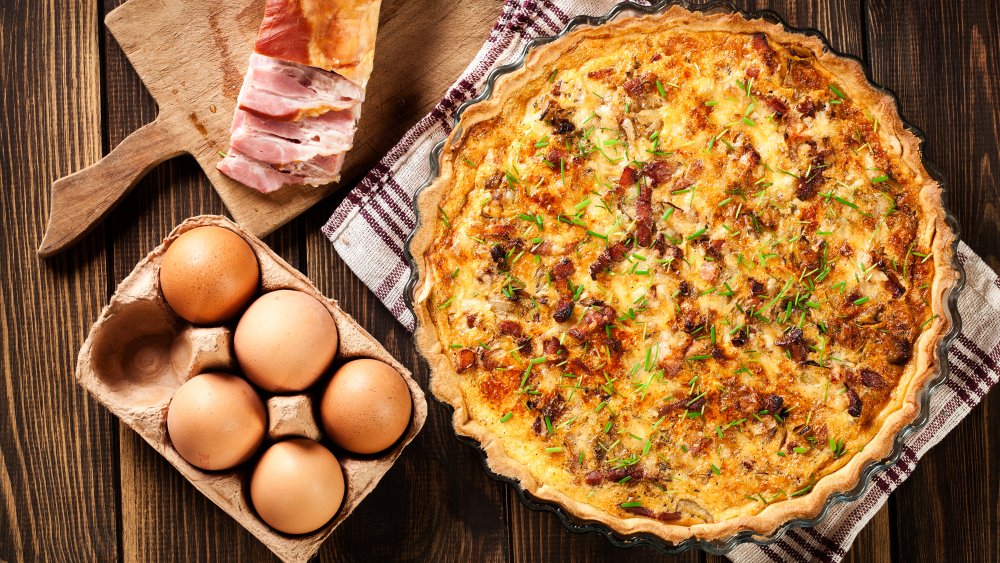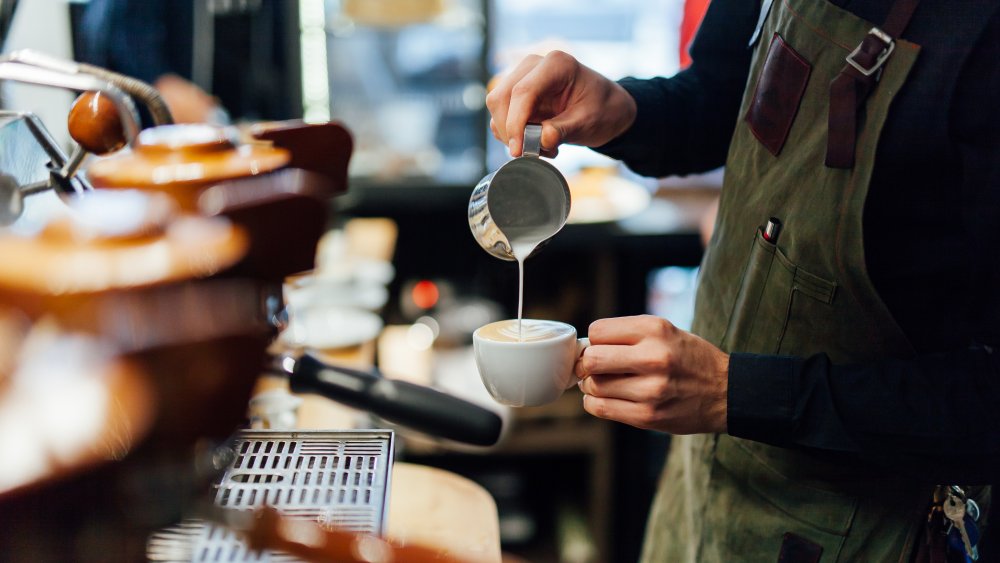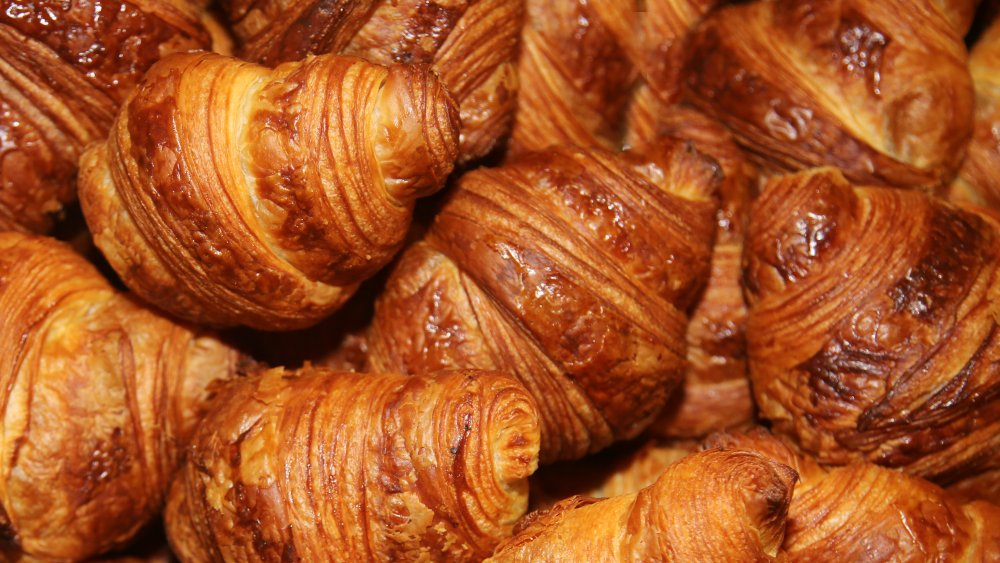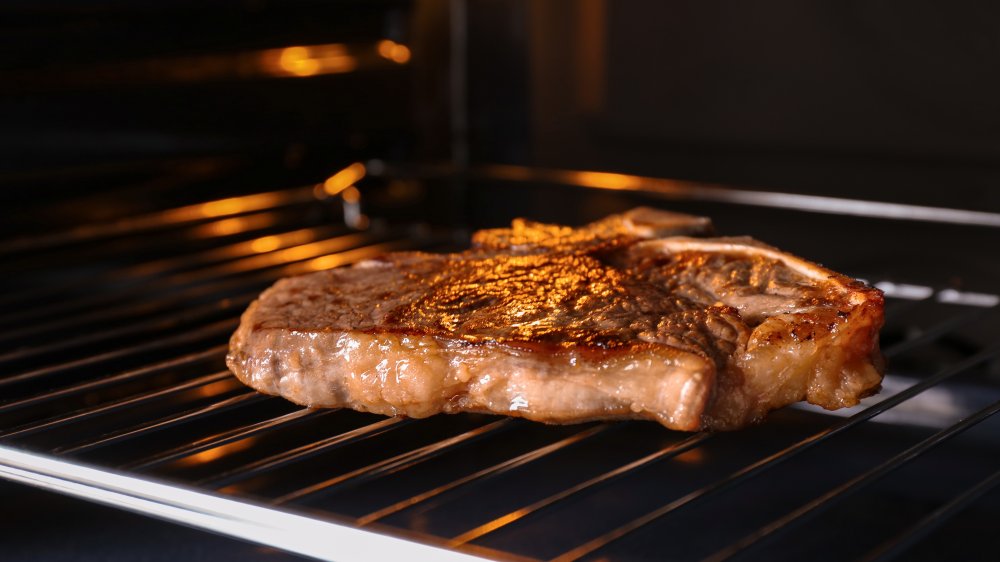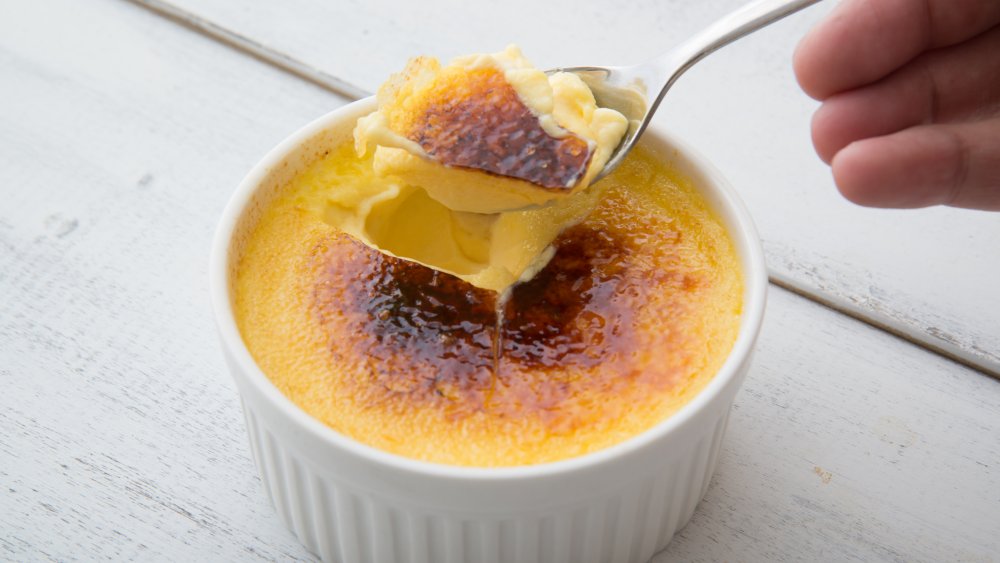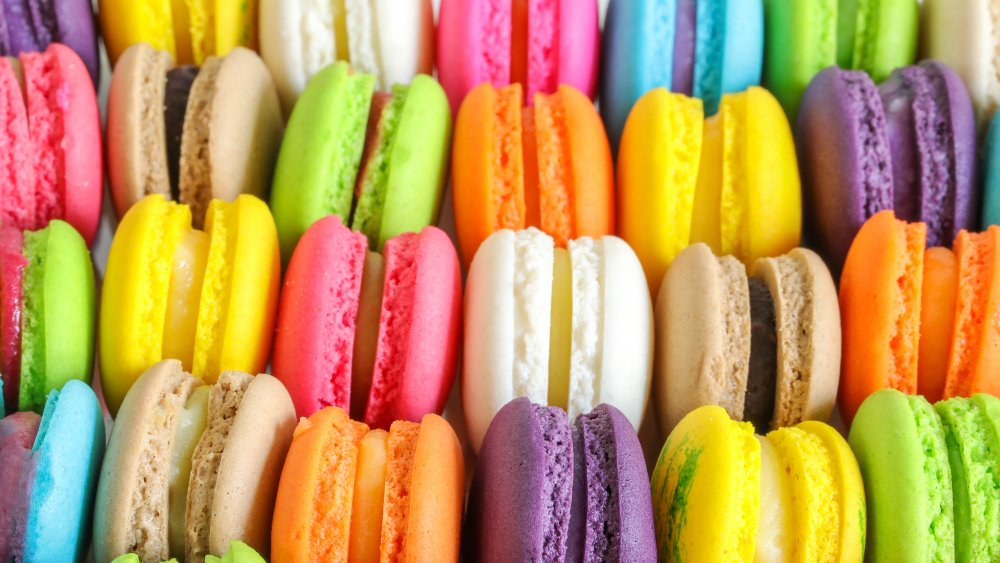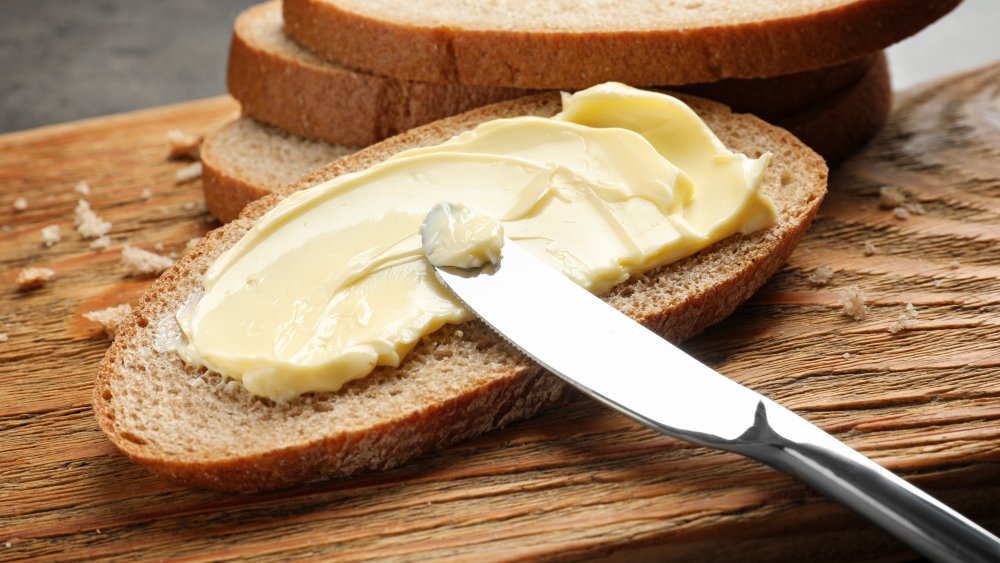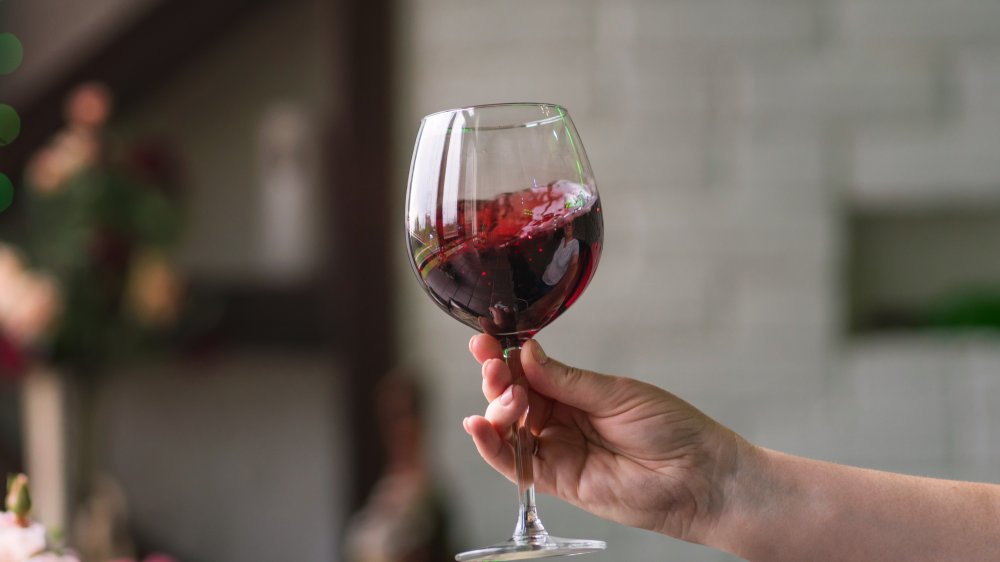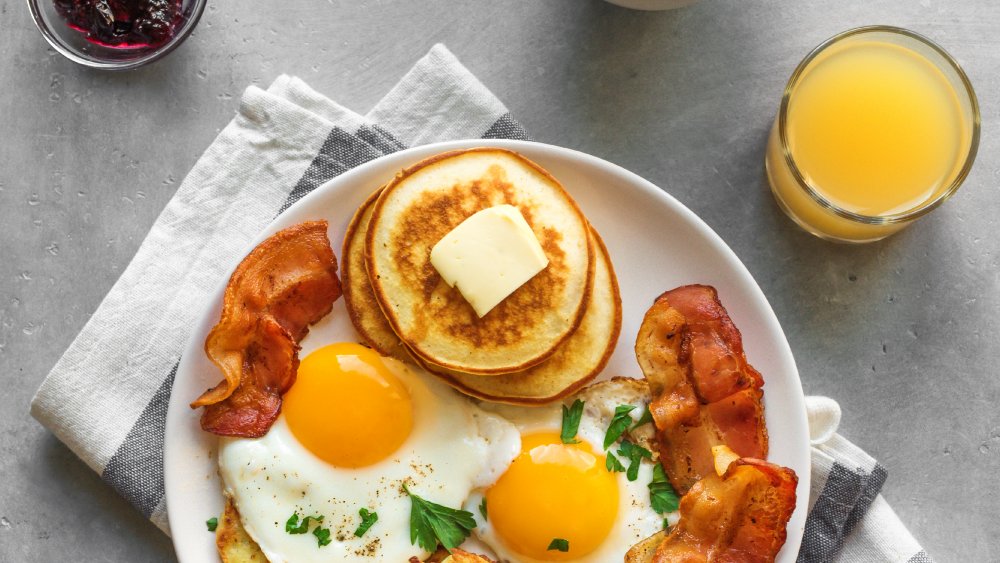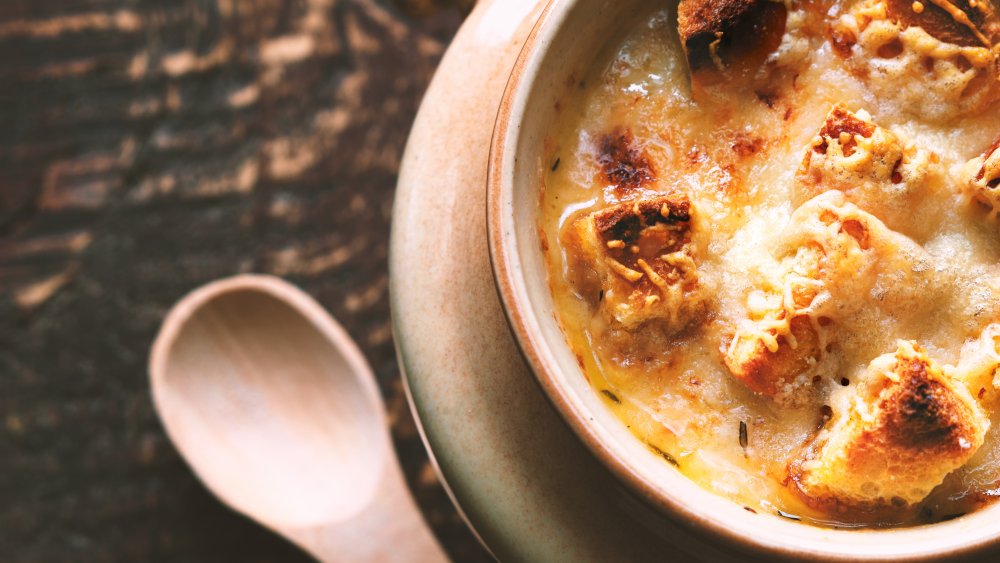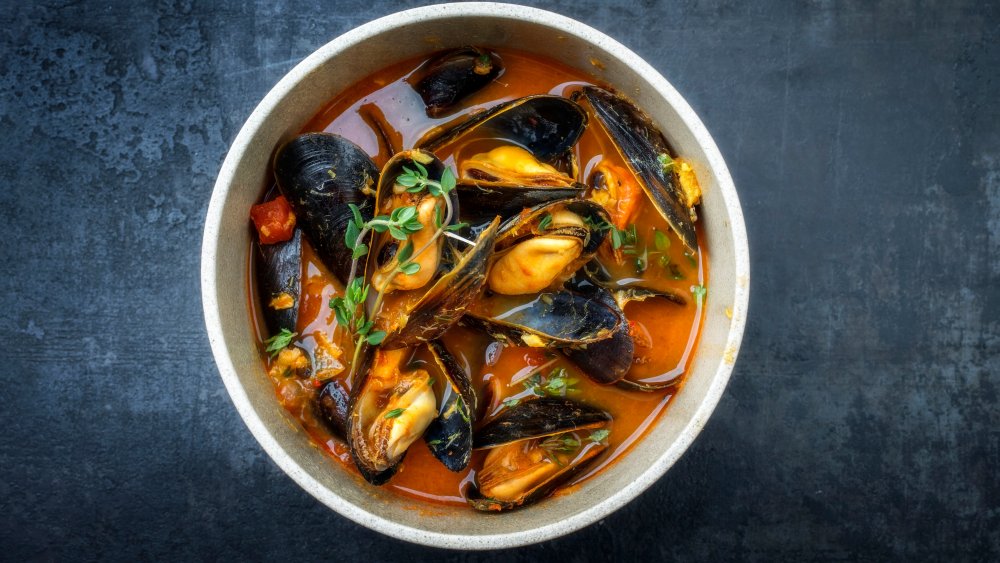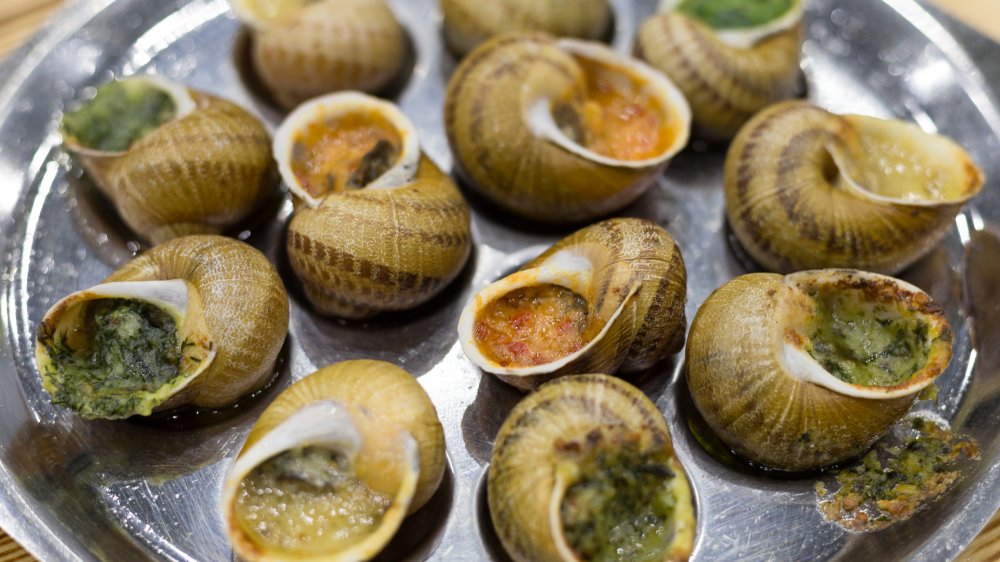Things You Should Never Order From A French Restaurant
Whether you've spent years wandering the streets of Paris and Marseilles or you've never even set foot on a plane, you're likely to encounter French food at some point in your life. After all, for a long time, French cuisine was viewed as the height of elegant dining. But times have changed, and French food has now seen a decline in popularity, especially as food previously thought of as "exotic" (whatever that means) has now become mainstream. Just think of the popularity of pho or biryani. "Food," according to The Guardian, "is constantly evolving, according to trend and time."
While French food may not hold the coveted spot as the foreign food Americans are most likely to eat on a fancy night out anymore, it's still a cuisine full of surprises and delightful dishes that you shouldn't hesitate to enjoy. But what about the stuff on the menu you should skip? Not everything is that delicious — or even that good for you.
Take some time to look into the dishes you just shouldn't order the next time you visit a French restaurant, and you'll have more room for the stuff you really can't go without.
Don't order quiche lorraine from a French restaurant
To be fair, going to a French restaurant when you're on a diet probably isn't a great idea. French food is often quite fattening. If you're actually dining in France, you might find that the portions make up for the richness of the food — they'll be quite small. Perhaps that's why French women have a reputation for being relatively thin despite all that hearty food.
But when you're dining in the U.S., you're likely to come across larger portions, even when you are dining at a French restaurant. Because of that, you may want to avoid some of the richer items on the menu. One of the richest of them all is quiche lorraine.
Yes, it is a delicious way to start your day, but no, it's definitely not something you should eat on the regular. Why? Well, according to Charlotte Martin, MS, RDN, CSOWM, CPT, "Traditional quiche is usually made with lots of cheese, heavy cream, and a pastry crust, making it carb-, fat-, and calorie-dense. Quiche lorraine is often even more fat- and calorie-rich thanks to the addition of bacon" (via Eat This, Not That!).
Her suggestion? If you must order the quiche lorraine, consider sharing it with someone else and adding a heaping serving of veggies on the side — it'll balance the meal out a bit.
Don't order cafe au lait from a French restaurant
If you're looking for an authentic French experience, you should be careful about how you order your coffee. You may think a café au lait is the way to go if you want to feel like you're sipping coffee in a Parisian cafe, but it's actually not something that French people drink all that much. If they do enjoy their coffee with milk, it's generally something that they'll drink at home.
So, if you're ordering from a French cafe, what kind of drink should you opt for instead? Keep it simple and classic by ordering a plain espresso. If you don't drink strong coffee, it could take some getting used to, but it's an acquired taste that many people grow to love over time.
Just can't get down with a literal shot of caffeine? A café crème may be more your style. It's similar to a cappuccino, but with a twist. And it's totally worth a try if you want to expand your coffee horizons.
Don't order a croissant from a French restaurant
Another French cafe classic that you might think of as a no-brainer if you ever visit Paris is the ubiquitous croissant. You don't have to know anything about France or French cuisine to know all about these pillowy clouds of buttery bread. In fact, you may have first encountered them in a dish as humble as a Jimmy Dean breakfast sandwich, hot from the microwave.
But just because you're familiar with the pastry doesn't mean it's the best thing to order the next time you decide to visit a French restaurant. According to Fodor's, the only place you should pick up a croissant from is a French boulangerie, preferably local (if you're in France, of course), and preferably before 10 a.m. (this is when they're the freshest and, therefore, the most delicious).
If you're just sitting down to eat breakfast at a French restaurant, there is a world of other pastries you can explore — and they might just complement your meal better than a croissant ever could.
Don't order a well-done steak from a French restaurant
This one isn't just a rule at French restaurants, but it should be mentioned anyway in case you haven't already heard: You should never order a well-done steak. Never never? Well, never if you actually care about the quality of the meat you're getting. Well-done steak just isn't a thing in France, and if you don't speak French, you may have a hard time getting a French chef to understand what you really want.
It's not just a cultural thing, either. Even in the United States, ordering a well-done steak can make chefs think you don't know anything about a good cut of meat ... and they may act accordingly by throwing your meat on the grill and not really looking at it until it's burnt to a crisp. On top of that, overcooking your meat can make it dry and tough, which isn't exactly appetizing.
Basically, whether you're at a super-nice French restaurant with a filet mignon on the menu or at your local Outback Steakhouse and want to to order a nice porterhouse, don't order your meat overcooked — trust us, it tastes better when you can see a little pink (okay, red) on the inside.
Don't order the creme brulee from a French restaurant... if you want to be healthy
Everyone wants to indulge every now and then, and if you love your sweets, perhaps the best way to do that is with a rich dessert. The French are known for their pastries and sweets like eclairs, crepes, and brioche. But perhaps the most well-known French sweet out there is creme brulee.
Just imagine a custard-like substance that offers a light flavor of vanilla and caramel. But the crust on top is where the action really happens. The sugary stuff on top is caramelized (basically, slightly burnt) to create a crunchy topping that you can actually crack with your spoon.
You've probably already realized that a dessert made with a crust of sugar probably isn't the healthiest thing you can order at a French restaurant. If you're trying to stick to a diet, it's probably better to skip this stuff. According to a Howcast YouTube video, creme caramel is a similar dessert to creme brulee, and it'll take a little less of a toll on your waistline.
Don't order macarons from a French restaurant
If you're dreaming of a trip to a Parisian cafe, you're probably thinking of tiny, sweet pastries, delicate cups of coffee steaming with the hottest expresso, and the cutest, pastel-colored macarons. In some cases, that's just what you're going to find. But coming across that type of cafe is difficult in Paris, let alone in the United States. The sad reality is that many of the macarons you'll see in bakeries or in restaurants actually aren't all that fresh. Instead, they've likely been mass-produced in big batches (via Fodor's). Not exactly what you're going for if you want an authentic French dessert.
Luckily, you don't have to swear off macarons forever if you want to hold out for the good stuff — you just have to know where you're getting them from. There are a ton of top-notch patisseries in France if you just know where to look. Stuck in the United States? If you live in a big city like New York, Chicago, or LA, there's even a chance that you'll find a top-notch French bakery somewhere closer to home.
Don't give up hope for the perfectly indulgent, painfully photogenic macaron you know you're craving, but do hold out for the real thing if you truly want to understand what all the hype is about.
Don't order butter for your bread at a French restaurant
You may be used to asking for butter for your bread when you go to an American restaurant, but that's not really a thing in France. Whether you're dining in the country or visiting a French restaurant elsewhere, you generally won't want to order butter with your bread. (Unless you're at breakfast, of course. In that case, you should absolutely slather it on — the French do.)
According to The Local, French diners pretty much never ask for butter at the dinner table. According to cookbook author Susan Herrmann Loomis, when it comes to asking for butter with their dinners, "The French just don't do it."
And while it may be acceptable at breakfast, you shouldn't order butter to go with your croissant (if you insist on having one). Why? Because a croissant is already largely made of butter, so just adding more on top is definitely going overboard.
Don't order any drink other than wine or water at a French restaurant
At most restaurants that serve American cuisine in the United States, you could order a whole slew of beverages to go with your meal. From soda to virgin cocktails to coffee or tea, the whole drinks menu is at your disposal. But at a French restaurant, you're looking at a much different equation.
Generally, when the French sit down to dinner, according to The Local, they order only two drinks: water or wine. Water because it'll help you digest your meal and wine because, well, why wouldn't you want wine? But that means that they're not too fond of other types of drinks. Kids might drink Coca-Cola on occasion, though it's still not very common, and if you're eating mussels or a few types of other food, a beer may be appropriate. But other than that, it's probably best to stay away from sugary or caffeinated drinks if you truly want to eat as the French do.
Don't order American-style breakfast from a French restaurant
You're already well-aware that France is known for its delectable cuisine. That may leave you scratching your head when you see American breakfast items on the menu at your favorite local French restaurant. This phenomenon is probably more expected if you're eating breakfast at a restaurant that's actually in France, as it could be attempting to attract tourists.
It should go without saying that indulging in a huge American-style breakfast is probably not the best way to order from a French restaurant if you really want to experience the best the country's cuisine has to offer. That could take some getting used to, as French breakfasts tend to be quite a bit lighter than American ones. You're more likely to grab a pastry and some coffee than you are to reach for anything with meat or eggs. And you're definitely not going to find a cold glass of milk on any menu.
If you really want to eat like the French, stick to the sweet pastries in the morning, and you'll be even more ready for a delicious, savory lunch.
Don't order French onion soup from a French restaurant (if you're on a diet)
When you're looking for something healthy to eat, the soup selection probably stands out from the beginning. After all, it just seems like a healthier option when compared to other dishes out there. Soups are typically light and packed with veggies, so what's wrong with starting your meal out with a bowl of it?
Well, if you're trying to eat healthy, there's a lot wrong with starting your meal off with a bowl of French onion soup. In a hearty bowl of French onion soup, you'll generally find a ton of butter and cheese. Yes, it's what makes this kind of soup so delicious, but it's also not that great for you. You may think you're digging into a light and fresh bowl of healthful goodness, but you're essentially just dunking your bread into a vat of beef-flavored fat (we know, that actually sounds pretty good).
Moral of the story? If you're on a diet, you should skip this soup since, according to Howcast, it's probably one of the fattiest items on the menu. Luckily, if you're at a good French restaurant, you should have plenty of other delicious appetizers and starters to choose from. Not on a diet? It may be worth indulging in, as long as you know what you're getting yourself into.
Don't ask for a fork for your mussels at a French restaurant
Mussels may not be the most popular type of seafood in the U.S., but they're absolutely delicious. They're basically little morsels of seafood goodness adorably tucked into convenient shells. When you're eating a plate of mussels, it looks like a lot more food than it really is, which may play a role in just how satisfying they taste.
If you aren't well-versed in the language of French seafood dining etiquette, you may not even know how to go about digging into a pile of this fresh, salty delicacy. You may be tempted to ask for a fork so you can pick those guys out of their shells before you slurp them down. But if you want to look like you know what you're doing, that's definitely something to avoid.
Okay, well, you might want to start with a fork to pull out your first mussel. But this one is an exception. After the first, French people tend to eat mussels by using the shell of one mussel to scoop the meat out of another (via Insider). To some, it may even be considered rude to use a fork instead of a mussel shell. This may be surprising since the French are known to use their utensils for everything — even pizza and tacos. But this is just one of those strange rules you have to roll with when you're learning about a new cuisine and culture.
Don't order anything too regional at a French restaurant
A lot of times, when you're visiting a French restaurant, there's not that much distinction between regions when it comes to the food on the menu, especially if you're eating somewhere that caters to tourists (pro tip: don't). If you don't have an intimate knowledge of France, you may not realize just what parts of the country these different dishes come from. But that's a shame, as there are some dishes that are best enjoyed in their region of origin.
Take, for example, escargot. This dish is made up of richly cooked snails, and even though it might sound off-putting at first, it truly is delicious. But did you know that escargots come from France's Burgundy region? Therefore, you know you're likely to get the best escargots from that spot on the map.
The same can be said for coq au vin, which is a chicken and red wine stew. This dish is also from Burgundy, and it's not really known as a French dish so much as it's known as a Burgundian dish. However, not everyone is going to have the chance to travel to all the different regions around France, so if you see something regional you definitely want to try — go for it. Just be aware that what you're getting likely isn't as authentic as you wish it might be.

